Parents’ Evening – 3-6 Directress’s Presentation
WHY MONTESSORI?
Why did I choose this school??? Location??? Looks nice??? Friendly??? Free ECCE year??? Montessori principles??? Whatever your reason for being here, may I say welcome.
First and foremost Maria Montessori was a scientist, a real experimental scientist that explored the child’s mind by observing him, not by putting forth a theory and then forcing the facts to match it. No, she observed, experimented with the materials, pondered what she had seen and only then did she draw conclusions. This way, all her ideas were rooted in the reality, as every scientist should do. Yes, there are no tables of numbers, statistical tests or charts in her books, but the scientific basis of her ideas are there, only they are written in words and not in numbers. …
There is a sizable number of scientists that are studying with the tools of today, Montessori’s ideas.
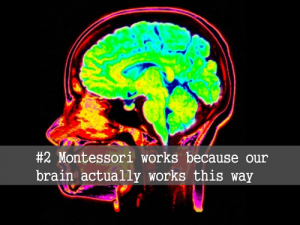
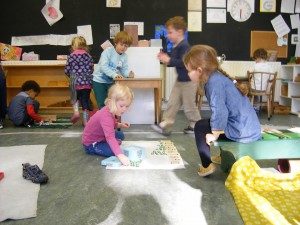
Here are a few examples of this,
First example. What you see here is quite common in a Montessori school.
But the watching girl is working hard here as a consequence of a recent
neurophysiological discovery: …the mirror neurons.
They are motor neurons that are activated when we do an action, but also when we watch the same action done by others. This means that when we watch an action we are really simulating the same action internally. …
Also the presentation of a material by the teacher is conceived, with motion analysis, the slow pace and the breaks, just to facilitate the work of mirror neurons to capture and acquire a new movement.
Why children take the “red rods” this way? (holding them at each end not in the middle ).
Shouldn’t it be more comfortable to take them in the middle with one hand lifting a suitcase?
But this way their muscles and their minds learn how long is one meter, because…… we have a hierarchy of accuracy in acquiring quantitative measures.
And length is one of the most accurate. The volume, that is the weight that you perceive taking the bar with only one hand, is much less accurate
For me this is another intuition of Maria Montessori.
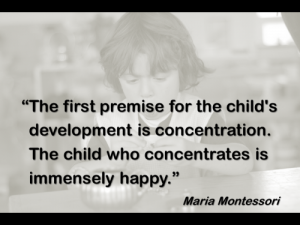
Concentration is something that shocks those who visit a Montessori school for the first time. They see children completely immersed in what they are doing, …
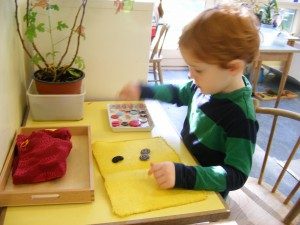
The same results found few years ago by Professor Mihály Csíkszentmihályi that studied this condition of deep concentration and called it Flow. He studied the conditions needed to enter Flow, its results and benefits.
Later, one of the Csíkszentmihályi students started studying Flow in Montessori schools and produced some very interesting works. Besides the content, in this one I found two interesting premises: one, he says he is outside the Montessori community, so his conclusions are not influenced by preconceived ideas (every scientist should do this). Second, he states that the Montessori ideas on concentration deserve a much deeper study because this is a hot theme today in psychology research.
Interesting, but, what are the conditions to establish Flow? First, to enter this state you need clear rules.
And what do you find in a Montessori school? Clear rules!
Second, you need immediate and clear feedback on where you are in the chosen job.
And this is exactly what the material provides you.
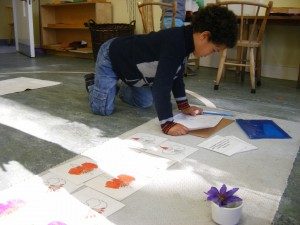
For example
But the most important condition to enter Flow is that the challenge, the difficulty of the task should be balanced or just a little above the person’s skills.
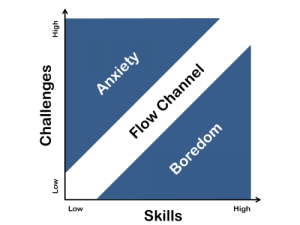
In this way the person enters Flow and stays in the so called “flow channel” because…
…if the task is too simple, it is boring (1). If it is too complex respect to the person’s skills, it generates anxiety (2). Instead the correct balance induces Flow (3).
And what happens in a Montessori school? The teacher proposes an activity, see it is too simple, so she proposes another one that is just slightly too complex, so she proposes others activities that finally makes the kid stay in the flow channel and thus being “immensely happy”.
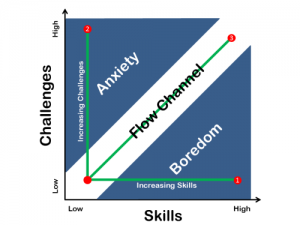
How the teacher arrives at this result? By carefully observing each child. In this activity the teacher is acting as a scientist, testing out hypotheses about what kind of assistance might be most helpful to this particular child or if she is ready for new challenges. It is not easy to do. It takes training to become a scientist.
Dr. Steven Hughes, President of the American Academy of Pediatric Neuropsychology and in charge of the AMI Research department, said in an interview: “Maria Montessori really got everything right… She anticipated so much of what we know about neuroscience, brain development, and optimum models of education”.
But there is a much more important reason to choose a Montessori school. …
In the words of Maria Montessori: “Children are human beings to whom respect is due, superior to us because of their innocence and the broader possibilities of their future” (from “The Montessori Method: Scientific Pedagogy as Applied to Child Education in the Children’s Houses”). This respect comes before the materials, before the school routine, before the presentations. It is respecting the times of the child, his aspirations and desires by guiding him, not training him. This is the reason why the Montessori’s ideas are relevant, not the techniques.
“Montessori is an attitude, not a type of school”.
”.for me The real “Real life” needs other skills: cooperation, creativity, imagination, communication. .…
A Montessori student once said: “Here we do not do what we want, we want what we do!”
Alison Pigot, 3-6 Directress

